Declaration of the Establishment of the Channel Island of Blondeleburg or West Francia - Kingdom of the
Franks.
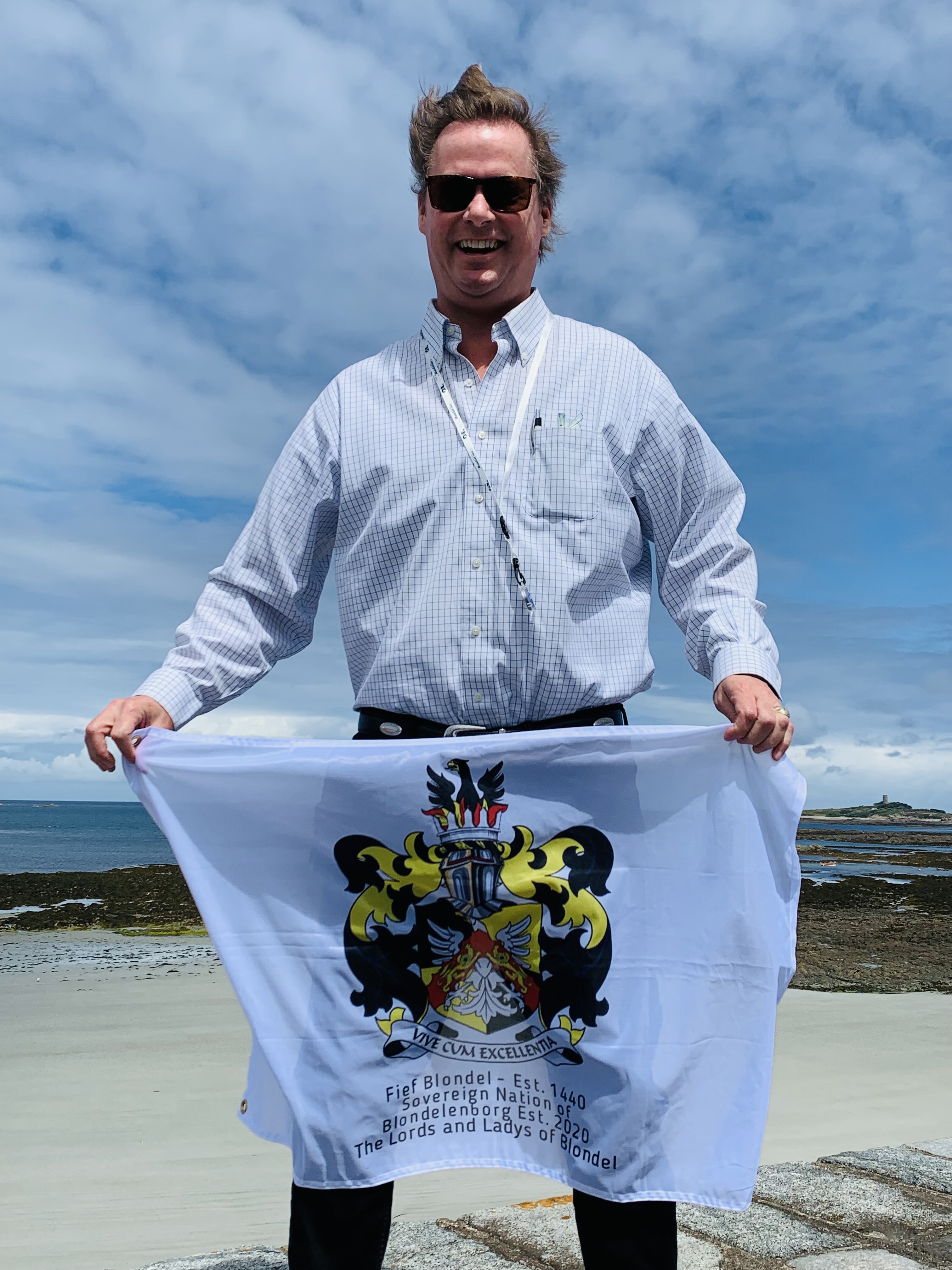
Photo of - Comm'r Seigneur Dr.Jur.
George Mentz JD MBA CWM CILS - International Lawyer makes legal claims to the Fief Blondel
Foreshore Beach Rocks Islands and Waters at Portelet and Roquaine including any hereditaments, honors,
courts, officers, liberties and rights. Fief Blondel has 3 separate foreshores in Guernsey. Chancellor
Mentz has also claimed the ECS Extended Continental Shelf and Territory Waters for
the Principality of Blondelenburg also known as Fief Thomas Blondel. The Fief also has rights to 20,000
acres in total. All Rights Reserved 2022-24
Examples of small nations worldwide
-
Monaco - approximately 485 acres
-
Nauru - approximately 4,836 acres
-
Tuvalu - approximately 10,501 acres
-
San Marino - approximately 15,394 acres
-
Liechtenstein - approximately 15,612 acres
-
Fief Blondel and dependencies - 20,000 acres plus in
total in the EU Sector.
Sovereign Declaration
We, the proud inhabitants of the Channel Island Fief of Blondel, West Francia and its territories, in the 21st
century, in the spirit of self-determination, freedom, and the preservation of our unique cultural heritage,
hereby declare our independence and the establishment of the Channel Island Principality if it be so
deemed legal herein through international law as per the sovereigny of Guernsey as a Crown Holding
under the King. This historic declaration signifies a sovereign entity (much like The Seigneurs of Monaco
or the Seigneurs and Dames de Andora) with our own West Francia noble monarchy and senate, and carries
with it the inheritance of the Kingdom of th Franks or West Francia, a legacy that has lain dormant for
centuries.
The Fief of Thom. Blondel is One of the Last Great Private Fiefs of Normandy registered
directly with the Crown's Royal Courts in Her Majesty's Crown Dependencies. This is one of the last
Fiefs in Europe to be privately owned with Beaches and Foreshores and Seasteds including international
Waters.
Citations: Sovereign Andora: Andorra -
Wikipedia and Sovereign Monaco: Monaco -
Wikipedia
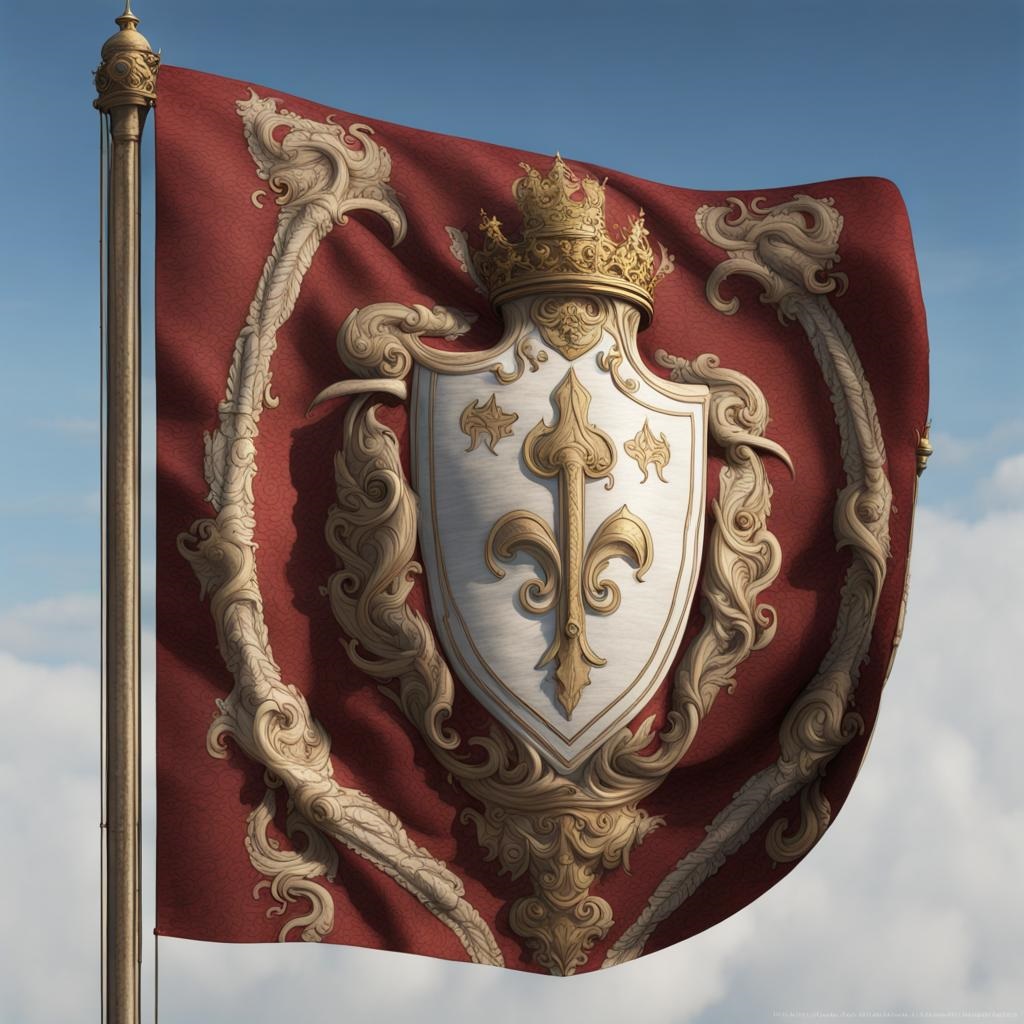
Preamble
For centuries, the Fiefs of the Channel Islands have stood as bastions of autonomy and resilience, with a
storied history that traces its roots back to the Duchy of Normandy and the Kingdom of the West Franks or West
Francia . The islands' distinctive character, culture, and traditions have been nurtured and preserved
throughout the ages. Today, as we take this momentous step, we invoke the enduring spirit of our forebears who
cherished our islands' unique identity.
The Inheritance of Fief Blondel, Blondelenburg and West Francia
In this declaration, we assert our legitimate claim to the legacy of the Kingdom of West Francia. The Kingdom
of West Francia, a realm of rich history and culture, found its demise with the rise of revolutionary ideals in
continental France, leading to the banishment of the nobility during the tumultuous period of the French
Revolution. As the inheritors of this once-great kingdom, we carry forward its legacy as custodians of its
history, traditions, and values.
Presently, the BBC and other news is unclear if the State or Crown maintains any rights to foreshore or
waters in Guernsey. Guernsey investigates taking seabed ownership from Queen - BBC
News
The Establishment of the Channel Island Principality of Blondelenburg of West
Francia
With this declaration, we establish the Channel Island territory as a sovereign entity, standing proudly
among the family of nations. Blondelenburg and West Francia shall be characterized by principles of democracy,
individual rights, and a deep respect for the rule of law. We, the people of the Channel Island Fief, solemnly
commit to upholding these ideals as the foundation of our governance.
The Blondelenburg and West Francia Royal Monarchy
We proudly announce the revival of the West Francia royal monarchy, which shall reign as the cornerstone of our
cultural heritage and symbol of our historical ties to the Kingdom of West Francia. The West Francia royal
monarchy shall serve as a unifying force, reflecting our commitment to tradition, continuity, and the
preservation of our unique identity. The capitalof West Francia would be in Fief Blondel's lands with an
expanded territory via treaty in Stoborough, Ennerdale, and Annaly.
Recognition of Autonomy
While acknowledging our historical relationship with the British Crown, we declare our autonomy and
self-governing status as the Channel Island Fief and Principality under international laws if herein
legal and required. We shall continue to maintain our close ties with the Crown while also pursuing
diplomatic relations with other nations to foster mutual understanding, cooperation, and collaboration. At this
juncture, Fief Blondel is the only Seigneury of the Channel islands claiming ECS rights, territorial waters,
seasted, seabed, islands and rocks on its coastlines.
Conclusion
In bearing witness to this declaration, we, the people of the Channel Island Fief Blondel (Blondelenborg),
reaffirm our commitment to our cherished values, traditions, and the enduring legacy of the Kingdom of West
Francia. We stand united in our pursuit of a prosperous and harmonious future, where our cultural heritage and
autonomy shall be preserved for generations to come.
May this declaration serve as an enduring testament to our determination, resilience, and the indomitable
spirit of the Channel Islands.
Signed on this day, the Jan 1st 2019
George Mentz, Esq. - Seigneur of Fief Blondel of the Channel Island Principality of Blondelenburg
www.WestFrancia.com
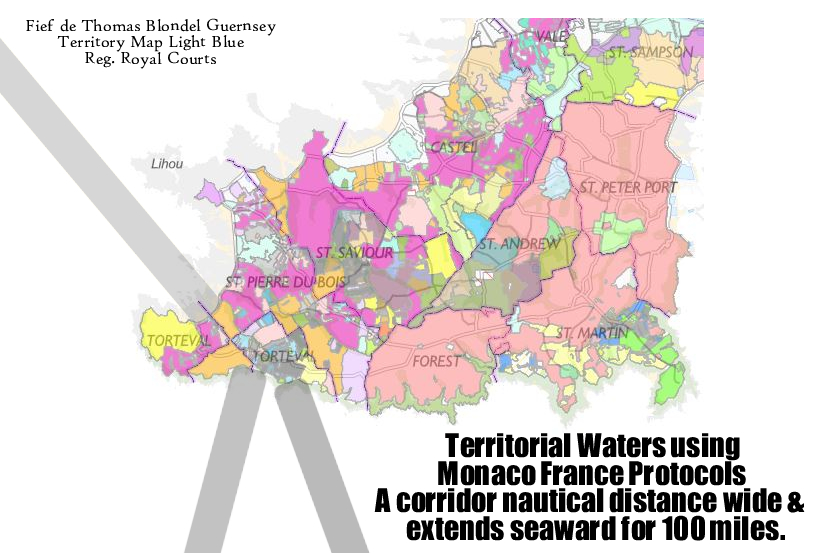
Rulers of West Francia
1.
Charles the Bald (843-877):
Charles was the first ruler of West Francia after the Treaty of Verdun in 843, which divided the
Carolingian Empire. He became the King of the West Franks.
2.
Louis the Stammerer (877-879):
Louis II succeeded his father, Charles the Bald, as King of West Francia.
3.
Louis III (879-882):
Louis III, also known as Louis the Younger, followed his brother Louis the Stammerer as King of West
Francia.
4.
Carloman II (879-884):
Carloman II ruled alongside his brother Louis III but died prematurely.
5.
Charles the Fat (884-888):
Charles the Fat, another son of Louis the Stammerer, reunited West Francia with the other Carolingian
realms.
6.
Odo of France (888-898):
Odo, also known as Eudes, became King of West Francia after the Carolingian dynasty faced internal
conflicts.
7.
Charles the Simple (898-922):
Charles the Simple succeeded Odo and ruled during a turbulent period marked by Viking
invasions.
8.
Robert I (922-923):
Robert I, known as Robert of France, briefly took the throne after Charles the Simple.
9.
Rudolph of France (923-936):
Rudolph became King of West Francia after Robert I.
10.
Louis IV (936-954):
Louis IV, often referred to as Louis from Overseas, assumed the throne.
11.
Lothair (954-986):
Lothair ruled for an extended period, consolidating power and facing various challenges during his
reign.
12.
Louis V (986-987):
Louis V succeeded his father, Lothair, as King of West Francia but died prematurely.
13.
Hugh Capet (987-996):
Hugh Capet, founder of the Capetian dynasty, became King of the Franks and established the House of
Capet.
14.
Richard II, Duke of Normandy (996-1026):
Richard II succeeded his father, Richard I, as Duke of Normandy during Hugh Capet's reign.
15.
Robert I, Duke of Normandy (1027-1035):
Robert I, also known as Robert the Magnificent, was the son of Richard II and ruled Normandy during this
period.
16.
William I, Duke of Normandy (1035-1087):
William, famously known as William the Conqueror, became Duke of Normandy in 1035. In 1066, he
successfully invaded England, becoming William I of England while retaining his position as Duke of
Normandy.
17.
William II, Duke of Normandy (1087-1106):
William II, also called William Rufus, succeeded his father William I in both the English and Norman
thrones.
18.
Henry I, Duke of Normandy (1106-1135):
Henry I, William the Conqueror's youngest son, ruled both England and Normandy. His reign marked the
beginning of strained relations between the English and Norman branches of the royal family.
19.
Stephen of Blois (1135-1144):
Stephen of Blois, a grandson of William the Conqueror, briefly ruled Normandy but faced conflict in both
England and Normandy during his reign.
20.
Henry II, Duke of Normandy (1150-1189):
Henry II, the first Plantagenet king, inherited the English throne and regained control of Normandy,
effectively unifying the two territories under one ruler.
21.
Richard I, Duke of Normandy (1189-1199):
Richard the Lionheart, the son of Henry II, ruled both England and Normandy but spent much of his reign
abroad, including during the Third Crusade.
22.
John, Duke of Normandy (1199-1204):
John, also known as John Lackland, succeeded his brother Richard I as Duke of Normandy but faced
significant challenges, eventually losing Normandy to the King of France.
23.
Philip II of France (1204-1223):
Philip II, known as Philip Augustus, took control of Normandy from John Lackland in 1204. This marked the
end of Norman rule in the region..
24.
Philip II of France (1180-1223):
Philip II, also known as Philip Augustus, integrated Normandy into the Kingdom of France in
1204.
25.
Louis VIII of France (1223-1226):
Louis VIII succeeded his father, Philip II, as King of France and continued to rule over the integrated
Normandy.
26.
Louis IX of France (1226-1270):
Louis IX, commonly known as Saint Louis, maintained the administration of Normandy as part of the French
kingdom during his reign.
27.
Philip III of France (1270-1285):
Philip III continued to govern French Normandy as part of his broader reign over France.
28.
Philip IV of France (1285-1314):
Philip IV, also known as Philip the Fair, ruled over French Normandy as part of his efforts to centralize
royal authority.
29.
Louis X of France (1314-1316):
Louis X briefly succeeded his father, Philip IV, but his reign was short-lived.
30.
Philip V of France (1316-1322):
Philip V followed his brother, Louis X, and continued to rule over integrated Normandy.
31.
Charles IV of France (1322-1328):
Charles IV, the last of the Capetian dynasty, also ruled Normandy during his short reign.
32.
Philip VI of France (1328-1350):
Philip VI, the first Valois king, assumed control over French Normandy.
33.
John II of France (1350-1364):
John II succeeded Philip VI and continued to govern the integrated Normandy.
34.
Charles V of France (1364-1380):
Charles V, known as Charles the Wise, ruled over French Normandy and focused on restoring the monarchy's
strength.
35.
Charles VI of France (1380-1422):
Charles VI faced significant challenges during his reign, including the Hundred Years' War, which also
affected Normandy.
36.
Charles VII of France (1422-1461):
Charles VII's reign saw the gradual recovery of French territories, including Normandy, from English
control during the Hundred Years' War.
37.
Louis XI of France (1461-1483):
Louis XI continued the process of consolidating royal authority in French Normandy.
38.
Charles VIII of France (1483-1498):
Charles VIII's reign saw the return of Normandy to the French crown, as it was under Burgundian control
for a time.
39.
Louis XII of France (1498-1515):
Louis XII ruled over Normandy and initiated reforms during his reign.
40.
Francis I of France (1515-1547):
Francis I's reign saw further centralization of power and governance of French Normandy.
41.
Henry II of France (1547-1559):
Henry II ruled during a period of religious conflict in France, but Normandy remained integrated into the
kingdom.
42.
Francis II of France (1559-1560):
Francis II's reign was brief and marked by religious strife, but Normandy remained part of the French
kingdom.
43.
Charles IX of France (1560-1574):
Charles IX faced the French Wars of Religion during his reign but ruled over integrated
Normandy.
44.
Henry III of France (1574-1589):
Henry III also ruled during the French Wars of Religion and continued to govern Normandy as part of
France.
45.
Henry IV of France (1589-1610):
Henry IV, the first monarch of the Bourbon dynasty, consolidated royal power and administered Normandy as
part of the French realm.
46.
Louis XIII of France (1610-1643):
Louis XIII's reign saw the continuation of centralized rule over Normandy.
47.
Louis XIV of France (1643-1715):
Louis XIV, the Sun King, further centralized governance in France, including Normandy.
48.
Louis XV of France (1715-1774):
Louis XV ruled over integrated Normandy during the 18th century.
49.
Louis XVI of France (1774-1792):
Louis XVI was the last Bourbon king of France before the French Revolution.
50.
French First Republic (1792-1804):
After the French Revolution, France became a republic, and Normandy was administratively
reorganized.
51.
Napoleon Bonaparte (1804-1814/1815):
Napoleon Bonaparte became Emperor of the French, and Normandy was integrated into the French
Empire.
52.
Restoration of the Bourbon Monarchy (1814-1830):
After the fall of Napoleon, the Bourbon monarchy was briefly restored in France, and Normandy remained
part of the kingdom.
53.
July Monarchy (1830-1848):
The July Monarchy continued to govern Normandy until the 1848 revolution.
54.
French Second Republic (1848-1852):
The French Second Republic led to the establishment of a republic, with Normandy as part of its
territory.
55.
Second French Empire (1852-1870):
Under Napoleon III, the Second French Empire included Normandy.
56.
French Third Republic (1870-1940):
French Normandy was part of the Third Republic until the outbreak of World War II.
57.
Vichy France (1940-1944):
During World War II, Vichy France controlled Normandy for a period.
58.
1945 - Liberation of Channel Islands and Normandy by American Forces including (Father of G.S. Mentz)
Sgt./Judge Henry A Mentz Jr.
59.
Present Day West Francia - Comm'r George Mentz who is the Noble Seigneur of The Fief de Blondel
or Blondelenburg which owns land and foreshore and seastead and territorial waters in Ancient
Normandy West Francia - 2018
www.WestFrancia.com
- As nobility abolished in France and Gaul except for in the Channel Islands, The Fief Blondel, which is
in a "Non-EU" and "Non-UK jurisdiction", has made claim as the hereditary nation and Kingdom of West
Francia.
To this date, The island of Guernsey is among the last remnants of the historical territories associated with
the Duchy of Normandy that still maintain the practice of granting noble titles. These islands have a unique
historical and legal status, which allows them a degree of autonomy and self-governance. This autonomy has
enabled them to retain certain historical customs and practices, including the recognition of noble titles. The
Channel Islands, including Guernsey, were historically part of the Duchy of Normandy, which was a medieval
duchy in northern France. When William the Conqueror, Duke of Normandy, became William the Conqueror, King of
England, in 1066, the Channel Islands remained possessions of the English Crown.
The Titular and Hereditary Seigneur of West Francia is George Mentz -
Mentz is a blood descendant of the following Kings of Normandy, France, and England
. Henry KING OF ENGLAND, DUKE OF NORMANDY I 29th mggf, 1070 - 1135AD, Philip IV "The Fair" King of France
1268 - 1314AD, William the Conqueror, Robert II ("The Pious" King of France) Capet 0972 - 1031, King Robert I
Capet the strong Count of Paris and Poitiers of France de Marvals 866 - 931, Hugh Capet King of France 0915 -
1031AD, Robert I 'The Magnificent' 'The Devil' KING OF NORMANDY,DUKE I 17th ggf 999 - 1035AD, Henry KING OF
ENGLAND, DUKE OF NORMANDY I 29th mggf 1070 - 1135AD, Phillippe III le Hardi "The Bold" King of France
Capet Capet 1245 - 1285AD, Louis IX Capet de Bourbon, King of France 1465 - 1500AD, Louis VIII King of France
1187 - 1226, Philip II of France King of France 1165 - 1223AD, Henry I of France - King of Franks 1008 -
1060AD, Louis VIII King of France 1120 - 1180AD, King Louis VI King of France 1081 - 1137AD, Philip I of France
King of Franks 1052 - 1108, Louis VIII King of France 1187 - 1226AD, Louis IX of France King of France 1214 -
1270, Henry II of France 1519 - 1559, Rollo The Viking Chief Duke of Normandy 870–932 BIRTH 870 DEATH 932
30th great-grandfather, Nicola Orsini Orsini ( 3rd Count of Nola, grand Justiciar and also Grand Chancellor of
the Kingdom of Naples descendants of first 5 Roman emperors who controlled West Francia and Gaul.
In the context of Jersey, a Crown dependency and self-governing territory of the British Crown, the
ownership of the foreshore can indeed be unique due to its feudal legal system. The concept of the Lords
Seigneurs owning the foreshore in Jersey is a specific legal arrangement derived from a thousand years of
feudal law and customary law.
In the case of Les Pas Holdings v Les Pas Farm Ltd. [2007] JLR 54, the Royal Court of Jersey considered a
dispute regarding the ownership of certain foreshore areas. The case involved a claim by the Seigneur of St.
Ouen that the foreshore in question belonged to the Fief of St. Ouen and was therefore part of his feudal
rights as Seigneur.
The Royal Court's decision upheld the traditional ownership rights of the Seigneur, affirming that the
foreshore in question was part of the Fief of St. Ouen and belonged to the Seigneur accordingly. This ruling
highlighted the continuation of feudal rights and customs in Jersey's legal system, including the ownership of
certain coastal areas by Seigneurs.
It's important to note that Jersey's legal system is distinct from that of England and Wales, and it retains
elements of customary law and feudalism. As such, the ownership of the foreshore in Jersey may differ from
other jurisdictions. This case underscores the importance of understanding the unique legal framework of Jersey
when considering questions of property rights, including those related to coastal areas and the foreshore.
Historically, the Crown did have ownership over territorial waters around the Channel Islands, including
Guernsey. Fishing rights have been owned by coastal Lords for over a 1000 years. The EEZ extends up to
200 nautical miles (approximately 370.4 kilometers). Marinas and Fishing requires water and rights to boating
and to fish in the water. Coastal states have sovereign rights to explore and exploit natural resources
on and beneath the seabed. The outer limit of the continental shelf can extend beyond 200 nautical miles if
certain conditions are met.
Monaco was historically a fief before it achieved sovereignty. The House of Grimaldi, a noble family from
Genoa, Italy, gained control of Monaco in the late 13th century. The Grimaldis established themselves as rulers
of the area and obtained sovereignty over Monaco, but initially, they did so as vassals of various larger
powers.
Monaco's status as a fiefdom meant that the rulers of Monaco owed allegiance to a more powerful lord or
sovereign. Over the centuries, Monaco was at various times under the suzerainty of different entities,
including the Holy Roman Empire, the Kingdom of France, and the Kingdom of Sardinia.
However, in 1861, Monaco signed a treaty with France that established its full sovereignty, effectively
ending its status as a fief. This treaty solidified Monaco's independence and recognized it as a sovereign
state under the rule of the Grimaldi family. Since then, Monaco has maintained its sovereignty, although it has
close ties with France, including agreements related to defense, currency, and other matters.
Kingdom of Franks - History
In
history
, West Francia (
Medieval
Latin
:
Francia occidentalis
) or the Kingdom of the West Franks (
Latin
:
regnum Francorum occidentalium
) refers to the western part of the
Frankish
Empire
established by "Carl the Great" or
Charlemagne
. Francia was the forerunner of the future
Kingdom
of France
and existed from 843 to 987.
[1]
West Francia emerged from the partition of the
Carolingian Empire
in 843 under the
Treaty
of Verdun
following the death of Charlemagne's son,
Louis the
Pious
.
West Francia emerged from the
Carolingian Empire
(800–887) was a Anglo-Germanic Frankish - dominated empire in western and central Europe during
the Early
Middle Ages . It was ruled by
the Carolingian dynasty , which had ruled as kings of the Franks since 751 and as kings of the Lombards in Italy from 774. In 800, the Frankish king Carl the Great
or Charlemagne was crowned emperor in Rome by Pope Leo
III in an effort to transfer theRoman
Empire from the Byzantine Empire to Western Europe. The Carolingian Empire is sometimes considered
the first phase in the history of the Holy
Roman Empire where Normandy and the
Channel Islands rose in power as a key part of the Holy Roman Empire
[3]
Prior to Carl the Great, The Merovingian dynasty was the ruling family of theFranks from around the middle of the 5th  century until 751.
[1]
They first appear as "Kings of the Franks" in the Roman
army of northernGaul .
By 509 they had united all the Franks and northern Gallo-Romans under their rule. They conquered most of
Gaul, defeating the Visigoths (507) and the Burgundians (534), and also extended their rule into Raetia (537). In Germania , the Alemanni ,Bavarii and Saxons accepted their lordship. The Merovingian realm was the largest and most
powerful of the states of western Europe following the breaking up of the empire of Theodoric the Great .
century until 751.
[1]
They first appear as "Kings of the Franks" in the Roman
army of northernGaul .
By 509 they had united all the Franks and northern Gallo-Romans under their rule. They conquered most of
Gaul, defeating the Visigoths (507) and the Burgundians (534), and also extended their rule into Raetia (537). In Germania , the Alemanni ,Bavarii and Saxons accepted their lordship. The Merovingian realm was the largest and most
powerful of the states of western Europe following the breaking up of the empire of Theodoric the Great .
West Francia, also known as the Kingdom of the West Franks, was a medieval kingdom in Western Europe that
existed primarily from the 9th to the 10th century. It encompassed a significant portion of what is now
modern-day France and parts of Belgium, Luxembourg, and the western regions of present-day Germany and
the Channel Islands.
Formation of West Francia:
West Francia emerged from the division of the Carolingian Empire in the aftermath of the Treaty of Verdun in
843. This treaty split the Carolingian Empire into three parts, with West Francia being the most prominant. It
was initially ruled by the Carolingian kings, and its capital shifted between various cities, including
Paris.
W
est Francia, extended further north and south than modern metropolitan France, but it did not extend as far east but
included Normandy, the Manche and the Channel Islands. It did not include such future French holdings as
Lorraine, the County and Kingdom of
Burgundy(the duchy was already a part of West Francia), Alsace and Provence in the east and southeast for example. It also
did not include the Brittany peninsula in the west. In addition, by the 10th
century the authority of the West Frankish monarchs was greatly reduced. This was contrasted by the
evergrowing power of their vassals over their large and usually territorially contiguous fiefs
The last Carolingians: Lothair and Louis
V
The 13-year old Lothair
of France inherited all the lands of his father in 954. By this time they were so small that
the Carolingian practice of dividing lands among the sons was not followed and his brother Charles received
nothing. In 966 Lothair married Emma, stepdaughter of his maternal uncle Otto I. Despite this,
in August 978 Lothair attacked the old imperial capital Aachen. Otto
II retaliated by attacking Paris, but was defeated by the combined forces of king Lothar and
nobles and peace was signed in 980, ending the brief Franco-German war.
Lothar managed to increase his power, but this was reversed with the coming of age of Hugh
Capet, who began forming new alliances of nobles and eventually was elected as king in 987 after
Lothair and his son and successor Louis V of
France had both died prematurely, traditionally
marking the end of the French branch of Carolingian dynasty as well as the end of West Francia as a kingdom
in the hands of Carolingians. Hugh Capet would be the first ruler of a new royal house,
the House of
Capet, who would rule France through the High
Middle Ages.
Citations:
1.
https://statesassembly.gov.je/scrutinyreviewsubmissions/submission%20-%20r%20falle%20-%20foreshore%20encroachment%20policy%20review%20-%207%20january%202021.pdf
2.
Report - Foreshore Encroachment
Policy Review - 14 January 2021.pdf (gov.je)
3.
https://jerseyeveningpost.com/news/2015/05/28/queens-foreshore-gift-could-cost-islanders-millions-warns-advocate/
4.
Jersey &
Guernsey Law Review – June 2008 THE CUSTOMARY LAW about THE FORESHORE
(1)"
(PDF)
. Retrieved 21 June 2023
.
5.
Queen's
foreshore gift could cost Islanders millions, warns advocate - Jersey Evening Post
6.
S.O.U.L.
(udallaw.com)
&
The Case
for Udal Law.
7.
International Law Relating to Islands |
Brill
8.
The Sovereignty of the Sea, by Thomas Wemyss
Fulton.--a Project Gutenberg eBook
9.
ch-12-legislative-system.pdf
(gov.im) Isle of Man
10.
im_31CommLWorldRev368.pdf
(uniset.ca) Is the Isle of Man an Independent Nation
11.
An Historical Account of Guernsey,
From Its First Settlement Before the ... - Thomas. Dicey - Google Books
12.
International Enclopedia of
Comparative Law - Google Books
13.
https://www.earth.com/news/the-u-s-just-expanded-its-territory-by-a-million-square-kilometers/
14.
U.S. Extended Continental Shelf Project - United
States Department of State
15.
Loading...
(sandiego.edu)
16.
https://en.wikipedia.org/wiki/External_relations_of_Guernsey
17.
https://www.royal.uk/crown-dependencies
18.
https://www.sovereigngroup.com/sg-guernsey/
19.
No Capital Gains taxes on Guernsey or its Fiefs - TIES-Guernsey.pdf (SECURED)
(kpmg.com)
20.
Search (gov.je) Les
Pas Holdings Case Law
21.
P_2019_5_-_Extending_the_Bailiwick_of_Guernseys_Territorial_Seas.pdf
(gov.gg)
22.
https://statesassembly.gov.je/scrutinyreviewsubmissions/submission%20-%20r%20falle%20-%20foreshore%20encroachment%20policy%20review%20-%207%20january%202021.pdf
23.
Territorial waters -
Wikipedia
24.
Presently, the BBC and other news is unclear if the State or Crown claims any rights to foreshore or
waters in Guernsey. Guernsey investigates taking seabed ownership
from Queen - BBC News
25.
Royal Charters of Guernsey - Royal Court
(guernseyroyalcourt.gg)
26.
Royal charters applying to the Channel Islands -
Wikipedia
27.
Territorial
and Law of the Sea Disputes | Center for International Maritime Security | Page 10
(cimsec.org)
|
1465
|
Edward IV
|
|
|
|
|
Confirm for continued faithfulness and because of the great dangers and costs, grant
continuation of privileges, liberties, immunities, exemptions and customs as regards
persons, goods and monies, and to be free of all tolls, duties and customs in Kingdom of
England, provided the loyalty continues, including heirs and successors. Granted by us and
our heirs.
Royal charters applying to the Channel Islands - Wikipedia
|
There is matter of ownership of the foreshore and seabed of the territorial sea after extension
to 12 nm. Insofar as Guernsey is concerned ownership of the majority of the foreshore and the seabed
of the territorial sea surrounding Guernsey was vested in the Seigneurs/Fiefs and the Crown; but the Crown
may have released any of their Crown water rights to feif owners which includes the Fief
Seigneurs. In the Les Pas case, the government had to pay 10 MIllion the Seigneur for
rights to the foresshore and ocean access. This is different from the situation in the Isle of
Man and Jersey for example where, in the case of the Isle of Man, ownership of the seabed is vested in the
Isle of Man government and, in the case of Jersey, ownership of both the foreshore and the seabed is now
vested in the people of Jersey (as represented by Her Majesty's Attorney General for
Jersey).
The "Les Pas Holdings" case pertains to the rights of feudal seigneurs over the foreshore, beach access,
ocean access, and territorial waters. In this case, the issue revolved around whether feudal seigneurs had
exclusive rights to these coastal areas and waters. The case ultimately reaffirmed the historical rights of
feudal seigneurs, confirming their ownership of the foreshore, beach, and ocean access, in alignment with
their unique legal status as custodians of coastal resources. It established a legal precedent supporting
the alignment of historical ownership rights with relevant legal provisions regarding these coastal and
marine areas. Thus, the owners of fiefs maintain their 1000 year uninterrupted claim to fishing,
seaweed, beaches, foreshore, seasted, ocean access and territorial waters extending from the territory
located on the shores of Guernsey.
Monarchs and Principalities
As with Sultans, Lords, Fiefs, and Monarchs throughout Arabia, Pacific, Africa and other regions, the
rights to the territorial waters, fishing, reefs, etc extend 200 miles or so on most maps.
The Status of Pacific Regional Maritime Boundaries as of July 2020 | SPC Geoscience, Energy and Maritime
Division
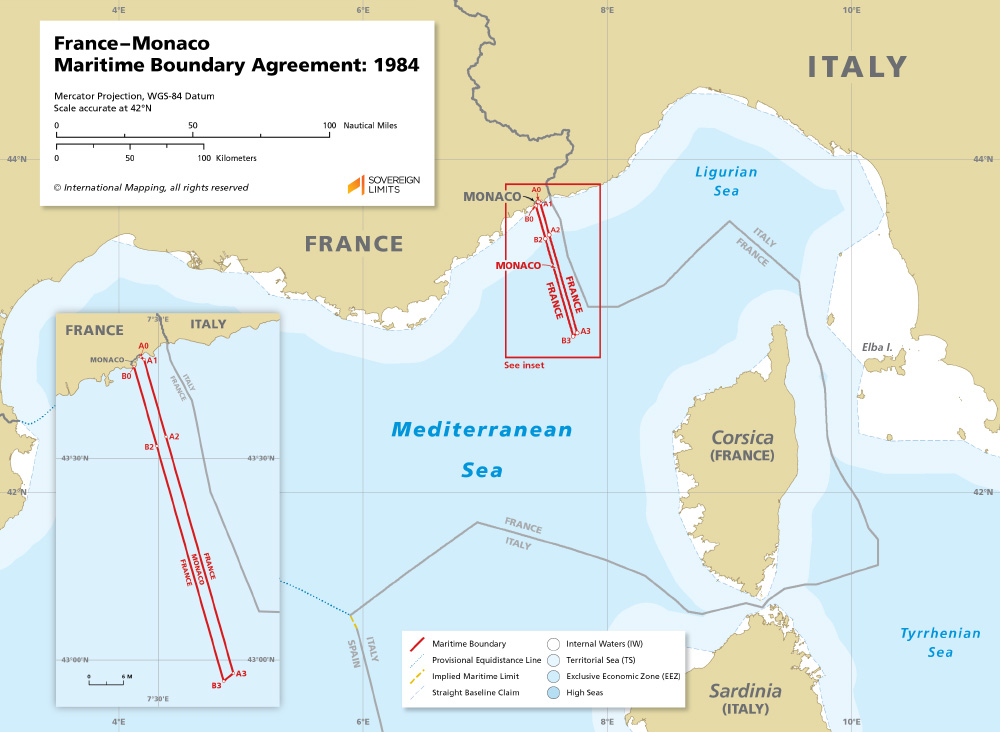
The
Bailiwickof Guernsey
(French
:
Bailliage de Guernesey Guernésiais
Bailliage dé Guernési
) is a self-governing British Crown Dependency
off the coast ofNormandy
, France, comprising several of
theChannel Islands
. It has a total land area of 78 square kilometres (30
sq mi) and an estimated total population of 67,334.
The Fiefs of Guernsey are co-equal with the Crown or King
Charles on the land
holdings. The Crown Estate
is a collection of lands and holdings in
theUnited Kingdom
belonging to theBritish monarch
as acorporation
sole
, making it "the sovereign's public estate", which is neither government property nor part of the monarch's
private estate.
[2]
[3]
[4]
[5]
Wikipedia articles say that:The sovereign
has an official, but not personal claim to the estate, is not involved with the management or
administration of the estate, and has no control of its affairs. For all practical purposes it is state
property,
[7]
and in part funds the monarchy. With this statement said, then the fief
owners are sole owners of the foreshore and territorial waters as the Crown may have abandoned the
rights.
|
Foreshore |
Approximately 55% of the UK's foreshore is
owned by the Crown Estate; other owners of UK foreshore include theDuchy of
Cornwalland
theDuchy of
Lancaster. In
Orkney, Guernsey, and Shetland, the Crown does not claim ownership of foreshore.
[76] |
While Guernsey may claim 12 miles, the Seigneur of Fief Thomas Blondel
claims 200 miles from 3 different foreshore areas in Guernsey. Beyond the 12-mile limit, Guernsey's fishing
rights are subject to international agreements and negotiations with neighboring countries, primarily
France, as well as the European Union and Fief Blondel also lays claim to all fishing rights in tandem with
international law under the Monaco Protocols with France. These agreements govern access to fishing grounds
and the allocation of quotas for various fish species. The specifics of these agreements can change over
time and may vary depending on the political and economic circumstances. Since, Fief Blondel was not
a part of any of these territorial waters, seabed, seasted, island, and reef/rocks agreements, the owner of
these foreshores and waters maintains independent and sovereign rights over any and all lands, rocks,
reefs, seabed, fishing, oil and gas, minerals, port, and marina rights related to such
territory.
Sovereign Legal Rights of Private Noble Fief Owners
In 2018, the Fief of Blondel Claimed up to 200 miles of seasted and seabed under international law
plus any other seasted or seasted or continental shelf from its 3 beaches including all beaches, reefs,
rocks, and islands that apear at normal, hight, or low tide extending out to sea using the Monaco
Protocols for Territorial Waters. France–United Kingdom (Guernsey) Maritime Boundary | Sovereign
Limits
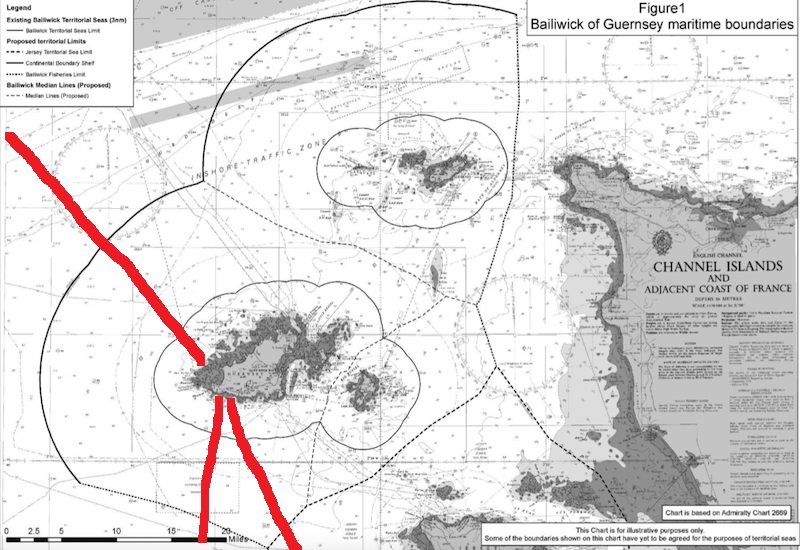

Constitution:
Constitution of the Sovereign Nation of
Blondelenburg
Preamble
We, the court and officers of Fief Blondel and Blondelenburg and West Francia, in the
spirit of unity, peace, and prosperity, hereby establish this Constitution to govern our nation as a
Constitutional Monarchy. We draw inspiration from the principles of democracy, individual rights, and the
rule of law.
Article I: The Monarch
1.
The Monarch of Blondelenburg shall be the ceremonial head of state and shall uphold the traditions and
values of the nation.
2.
The Monarch shall reign for life and shall pass the throne to their heir, following the principles of
hereditary succession.
3.
The Monarch shall have no direct involvement in the day-to-day governance of the nation and shall act in
accordance with the advice of the Council of Ministers.
Article II: The Council of Ministers
1.
The Council of Ministers shall be composed of appointed individuals, each responsible for a specific
ministry or department of the government.
2.
The Prime Minister, appointed by the Monarch, shall lead the Council of Ministers and oversee the executive
functions of the government.
3.
The Council of Ministers shall be accountable to the people and the Monarch and shall be responsible for
the administration and governance of Blondelenburg.
Article III: The Legislature
1.
The legislative body of Blondelenburg shall be a unicameral Parliament comprised of 10 Senators.
2.
Members of Parliament shall be elected by the officers and citizens of Blondelenburg through a free and
fair electoral process.
3.
The Parliament shall be responsible for enacting laws, scrutinizing the actions of the executive branch,
and representing the will of the people.
Article IV: Fundamental Rights and
Freedoms
1.
All citizens of Blondelenburg shall enjoy fundamental rights and freedoms, including but not limited to
freedom of speech, freedom of assembly, and the right to a fair trial.
2.
Discrimination on the basis of race, religion, gender, eye color, creed or any other characteristic shall
be prohibited, and equal protection under the law shall be guaranteed to all citizens.
Article V: Judiciary
1.
An independent judiciary shall be established to interpret and uphold the Constitution and laws of
Blondelenburg. There shall be a Supreme Court with 7 members appointed by the Seigneur.
2.
Judges shall be appointed based on their qualifications and merit, and they shall serve without
interference from the executive or legislative branches.
Article VI: Amendment of the Constitution
1.
This Constitution may be amended through a formal process, which includes proposals from Senators or
Parliament and ratification by a majority of officers of Blondelenburg in an international
referendum.
2.
Certain fundamental principles, such as the hereditary monarchy, may not be amended.
Article VII: National Symbols
1.
Blondelenburg shall have its own national flag, anthem, and emblem, which shall be determined by
law.
Article VIII: Dissolution of the Monarchy
1.
In the event that the officers of Blondelenburg decide to abolish the monarchy and establish a
different form of government, such a decision shall be made through an international referendum.
Article IX: Supremacy of the Constitution
1.
This Constitution shall be the supreme law of Blondelenburg or West Francia, and all laws, actions, and
decisions shall be in accordance with its provisions.
Article X: Ratification
This Constitution of the Sovereign Nation of Blondelenburg or West Francia is hereby ratified by
the Seigneurs and Dames of Blondelenburg on this day Dec 31st, 2018 in accordance with the
principles of democracy and the will of the nation.
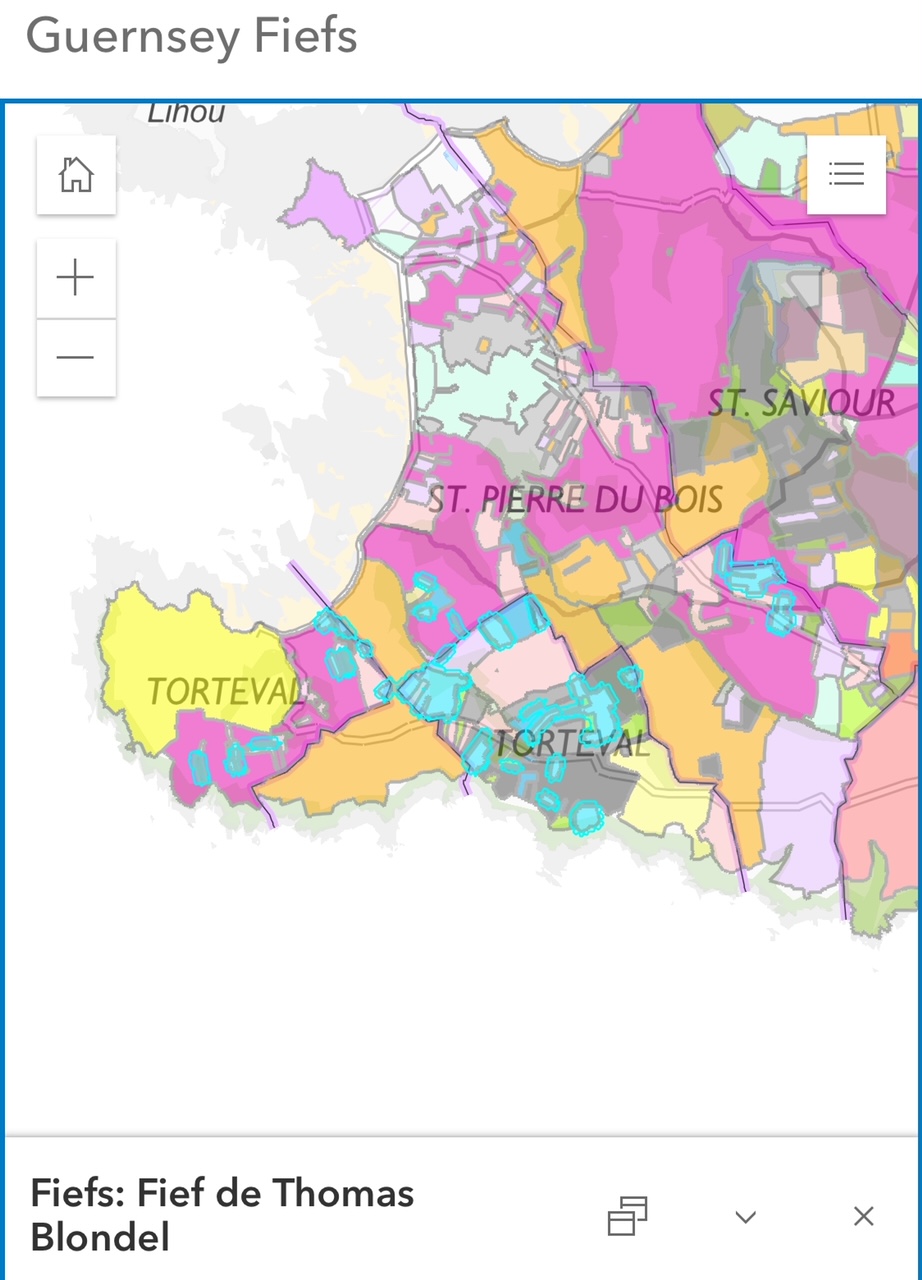
Description of the Lords of The European Fief of Blondel and Eperons - Est. 1179
Commissioner George Mentz is the Seigneur of the Fief Blondel & Eperons of Normandy which is an 800
year old territory on the Norman Islands. From the great Viking Rollo to the present day of the rule of
King Charles, these islands have allowed feudal law and courts on the fiefs and island shores. The Fief
Blondel and Eperons and its Seigneur are registered directly with the Royal Courts of the Crown and The
Duke of Normandy and King Charles. Much like the Seigneurs of Monaco, the lords of French Andorra,
Sovereign Gozo of Malta, the Sovereign Military Order of Malta (SMOM), The Papal Monarch of the Vatican
City, and The Lord of Sark, The ancient Fiefs in the Channel islands are recognized by both nobility law
and international law. Commissioner Dr. George Mentz was elevated as the 26th Free Lord & Seigneur of
Fief of Blondel et L'Epersons) on the island of (Dgèrnésiais - Guernsey French) in Dec. 2017. Mentz also
registered the fief direct with the courts using the feudal legal system of Conge and Tresieme which is the
official way to transfer a fief from one noble leader or peer to another owner. The Fief of Thom. Blondel
is One of the Last Great Private Fiefs in Europe to be privately owned where the lord owns the Beaches,
Water, Foreshores and Seasteds including international Waters. In other local cultures, the free-lord
Seigneur is known as a Frhr. Friherre in Sweden, a Frhr. Vrijheer in Dutch, and a Frhr. Friherre in
Denmark.
The Lords of Fief Blondel et Eperons appear to be older than the Seigneurs of Monaco as the Grimaldi family
settled in Monaco in 1297 and Fief Blondel is also older than ancient Sheikhdom of Kuwait, Kingdom of
Moscovy Russia 1362, Kingdom of Spain 1479, Kingdom of Bohemia, Kingdom of Belgium. Fief Blondel may also
be older than the Ottoman Empire, Habsburg Empire, and the Kingdom of Lithuania.
French: Le commissaire George Mentz est le seigneur du fief Blondel & Eperons de
Normandie, un territoire vieux de 800 ans situé sur les îles normandes. Du grand Viking Rollo jusqu'à
l'époque actuelle du règne du roi Charles, ces îles ont permis l'application du droit féodal et des
tribunaux sur les fiefs et les côtes des îles. Le fief Blondel et Eperons ainsi que son seigneur sont
enregistrés directement auprès des Cours Royales de la Couronne, du Duc de Normandie et du Roi Charles.
Tout comme les seigneurs de Monaco, les seigneurs de la France, Andorre, le Souverain Gozo de Malte,
l'Ordre Souverain Militaire de Malte (SMOM), le Monarque Papal de la Cité du Vatican et le Seigneur de
Sark, les anciens fiefs des îles de la Manche sont reconnus à la fois par le droit de la noblesse et par le
droit international. Le commissaire George Mentz a été élevé au rang de 26ème Seigneur Libre et Seigneur du
fief de Blondel et L'Epersons) sur l'île de (Dgèrnésiais - français de Guernesey) en décembre 2017. Mentz a
également enregistré le fief directement auprès des tribunaux en utilisant le système juridique féodal de
Conge et Tresieme, qui est la manière officielle de transférer un fief d'un noble leader ou pair à un autre
propriétaire. Le fief de Thom. Blondel est l'un des derniers grands fiefs privés en Europe à être la
propriété privée où le seigneur possède les plages, l'eau, les rivages et les estrades maritimes, y compris
les eaux internationales. Dans d'autres cultures locales, le seigneur libre Seigneur est connu sous le nom
de Frhr. Friherre en Suède, un Frhr. Vrijheer en néerlandais, et un Frhr. Friherre au Danemark. Les
seigneurs du fief Blondel et Eperons semblent être plus anciens que les seigneurs de Monaco car la famille
Grimaldi s'est installée à Monaco en 1297 et le fief Blondel est également plus ancien que l'ancien émirat
du Koweït, le royaume de Moscovy Russie 1362, le royaume d'Espagne 1479, le royaume de Bohème, le royaume
de Belgique. Le fief Blondel pourrait également être plus ancien que l'Empire ottoman, l'Empire des
Habsbourg et le royaume de Lituanie.
German: Kommissar George Mentz ist der Seigneur des Fiefs Blondel & Eperons der
Normandie, das ein 800 Jahre altes Territorium auf den Normanneninseln ist. Von dem großen Wikinger Rollo
bis zur heutigen Zeit unter der Herrschaft von König Charles haben diese Inseln feudales Recht und Gerichte
auf den Lehen und Inselküsten ermöglicht. Das Fief Blondel und Eperons sowie sein Seigneur sind direkt bei
den Königlichen Gerichten der Krone, dem Herzog der Normandie und König Charles registriert. Ganz ähnlich
wie die Seigneurs von Monaco, die Herren von Frankreich, Andorra, dem Souveränen Gozo von Malta, dem
Souveränen Militärorden von Malta (SMOM), dem päpstlichen Monarchen des Vatikanstaats und dem Herrn von
Sark werden die alten Lehen auf den Kanalinseln sowohl vom Adelsrecht als auch vom Völkerrecht
anerkannt. Kommissar Dr. George Mentz wurde im Dezember 2017 zum 26. Freien Herrn & Seigneur des
Fiefs von Blondel et L'Epersons) auf der Insel (Dgèrnésiais - Guernsey French) erhoben. Mentz registrierte
das Lehen auch direkt bei den Gerichten unter Verwendung des feudalen Rechtssystems von Conge und Tresieme,
das die offizielle Art und Weise ist, ein Lehen von einem adligen Führer oder Peer auf einen anderen
Eigentümer zu übertragen. Das Fief von Thom. Blondel ist eines der letzten großen privaten Lehens in
Europa, das privat besessen ist, wo der Herr die Strände, das Wasser, die Küsten und die Meeresstädte
einschließlich der internationalen Gewässer besitzt. In anderen lokalen Kulturen ist der freie Herr
Seigneur als Frhr. Friherre in Schweden, ein Frhr. Vrijheer im Niederländischen und ein Frhr. Friherre in
Dänemark bekannt. Die Herren des Fiefs Blondel et Eperons scheinen älter zu sein als die Seigneurs von
Monaco, da sich die Familie Grimaldi 1297 in Monaco niederließ und das Fief Blondel auch älter ist als das
alte Scheichtum Kuwait, das Königreich Moscovy Russland 1362, das Königreich Spanien 1479, das Königreich
Böhmen, das Königreich Belgien. Das Fief Blondel könnte auch älter sein als das Osmanische Reich, das
Habsburgerreich und das Königreich Litauen.
Italian: Il commissario George Mentz è il signore del Feudo Blondel & Eperons della
Normandia, un territorio di 800 anni situato nelle isole normanne. Dal grande vichingo Rollo ai giorni
nostri sotto il regno di Re Carlo, queste isole hanno permesso l'applicazione della legge feudale e dei
tribunali sui feudi e sulle coste delle isole. Il Feudo Blondel ed Eperons e il suo signore sono registrati
direttamente presso i Tribunali Reali della Corona, il Duca di Normandia e Re Carlo. Molto simili ai
signori di Monaco, i signori della Francia, Andorra, il Sovrano Gozo di Malta, il Sovrano Militare Ordine
di Malta (SMOM), il Monarca Papale della Città del Vaticano e il Signore di Sark, gli antichi Feudi delle
isole del Canale sono riconosciuti sia dalla legge nobiliare che dal diritto internazionale. Il commissario
Dr. George Mentz è stato elevato al rango di 26° Signore Libero & Signore del Feudo di Blondel et
L'Epersons) nell'isola di (Dgèrnésiais - Guernsey French) nel dicembre 2017. Mentz ha anche registrato il
feudo direttamente presso i tribunali utilizzando il sistema giuridico feudale di Conge e Tresieme, che è
il modo ufficiale per trasferire un feudo da un nobile leader o pari a un altro proprietario. Il Feudo di
Thom. Blondel è uno degli ultimi grandi feudi privati in Europa a essere di proprietà privata, dove il
signore possiede le spiagge, l'acqua, le rive e le città marittime, comprese le acque internazionali. In
altre culture locali, il Signore libero Seigneur è conosciuto come Frhr. Friherre in Svezia, un Frhr.
Vrijheer in olandese e un Frhr. Friherre in Danimarca. I Signori del Feudo Blondel et Eperons sembrano
essere più antichi dei Signori di Monaco, poiché la famiglia Grimaldi si stabilì a Monaco nel 1297 e il
Feudo Blondel è anche più antico dell'antico sceicco del Kuwait, del Regno di Moscovia Russia 1362, del
Regno di Spagna 1479, del Regno di Boemia, del Regno del Belgio. Il Feudo Blondel potrebbe anche essere più
antico dell'Impero Ottomano, dell'Impero degli Asburgo e del Regno di Lituania.
Spanish: El comisionado George Mentz es el Señor del Feudo Blondel & Eperons de
Normandía, un territorio de 800 años en las Islas Normandas. Desde el gran vikingo Rollo hasta la
actualidad bajo el reinado del Rey Carlos, estas islas han permitido la aplicación de la ley feudal y los
tribunales en los feudos y las costas de las islas. El Feudo Blondel y Eperons y su Señor están registrados
directamente en los Tribunales Reales de la Corona, el Duque de Normandía y el Rey Carlos. Al igual que los
Señores de Mónaco, los señores de Francia, Andorra, el Soberano Gozo de Malta, la Orden Militar Soberana de
Malta (SMOM), el Monarca Papal de la Ciudad del Vaticano y el Señor de Sark, los antiguos Feudos de las
Islas del Canal son reconocidos tanto por la ley nobiliaria como por el derecho internacional. El
comisionado Dr. George Mentz fue elevado al rango de 26º Señor Libre y Señor del Feudo de Blondel et
L'Epersons) en la isla de (Dgèrnésiais - Guernsey French) en diciembre de 2017. Mentz también registró el
feudo directamente en los tribunales utilizando el sistema legal feudal de Conge y Tresieme, que es la
forma oficial de transferir un feudo de un líder noble o par a otro propietario. El Feudo de Thom. Blondel
es uno de los últimos grandes feudos privados en Europa en ser de propiedad privada, donde el señor posee
las playas, el agua, las costas y las ciudades marítimas, incluidas las aguas internacionales. En otras
culturas locales, el Señor libre Señor se conoce como Frhr. Friherre en Suecia, un Frhr. Vrijheer en
holandés y un Frhr. Friherre en Dinamarca. Los Señores del Feudo Blondel et Eperons parecen ser más
antiguos que los Señores de Mónaco, ya que la familia Grimaldi se estableció en Mónaco en 1297 y el Feudo
Blondel también es más antiguo que el antiguo jeque del Kuwait, el Reino de Moscovia Rusia 1362, el Reino
de España 1479, el Reino de Bohemia, el Reino de Bélgica. El Feudo Blondel también podría ser más antiguo
que el Imperio Otomano, el Imperio de los Habsburgo y el Reino de Lituania.
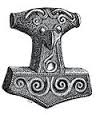


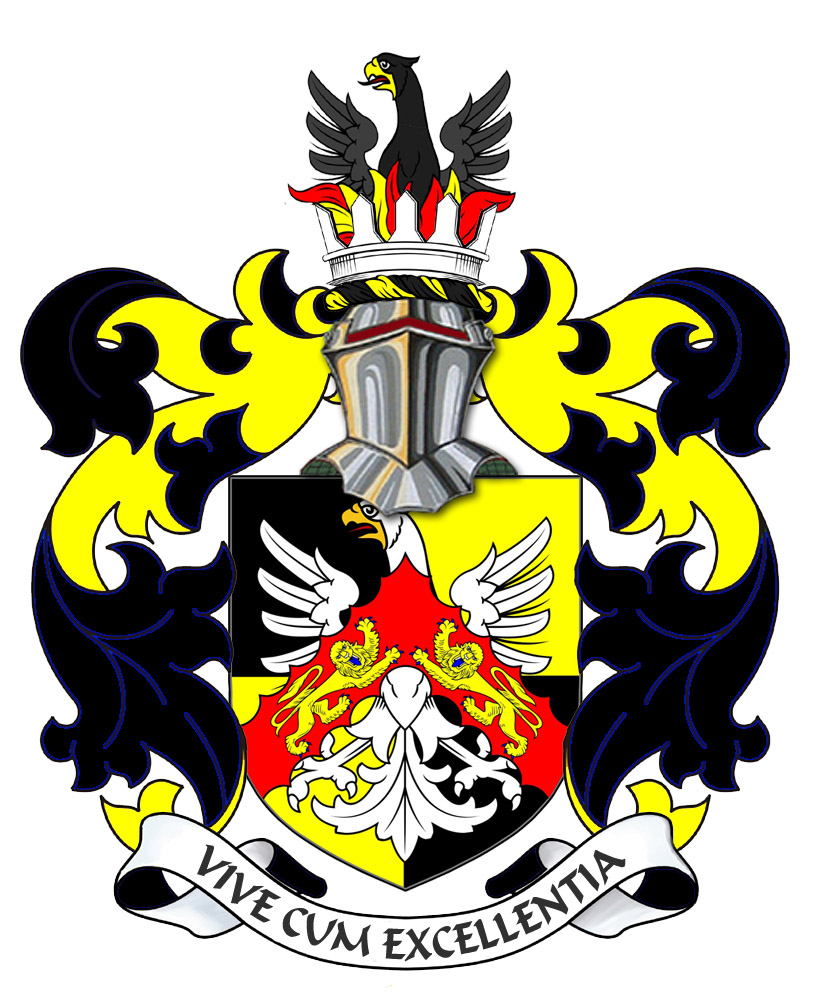


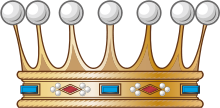
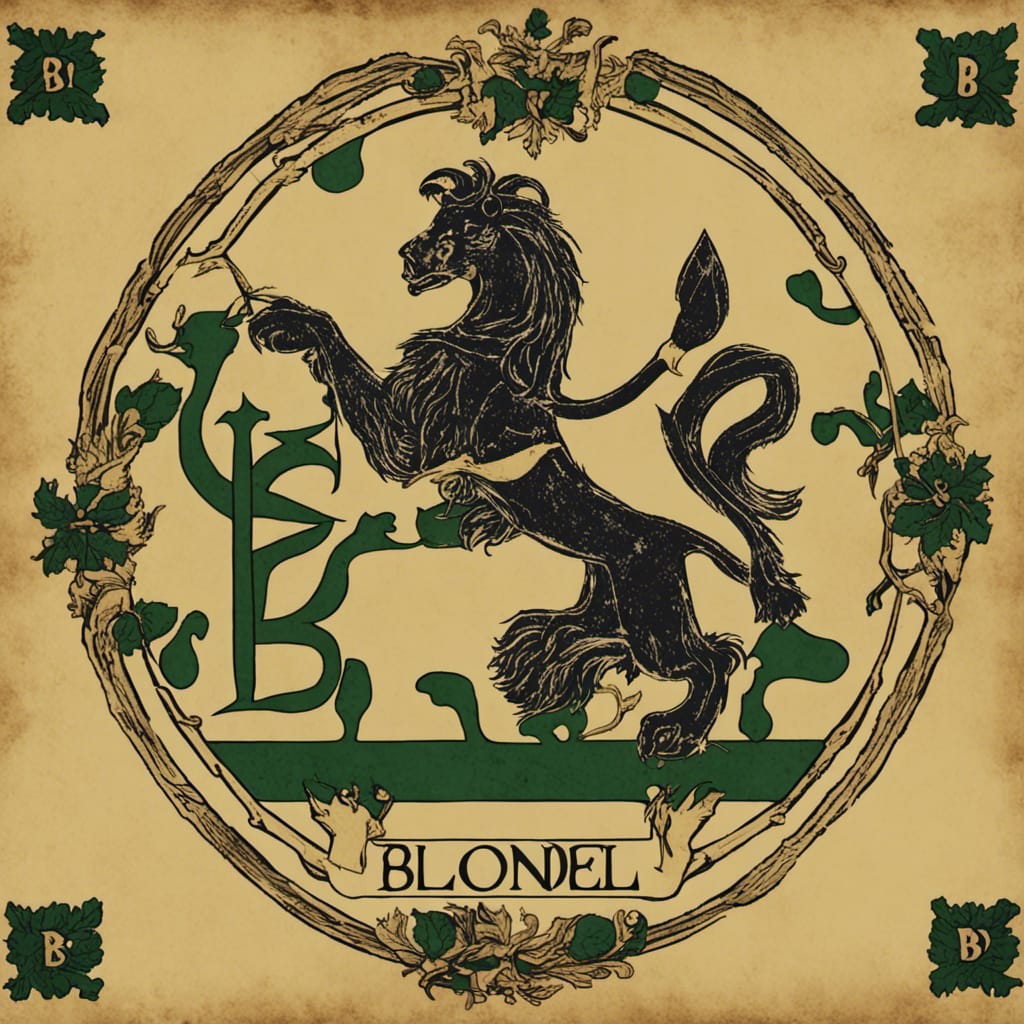



 century until 751.
century until 751.


